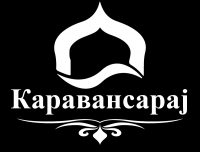By Adams Sitney
Though I have proposed that the important stations of the evolution of the American avant-garde film were collective, and not the invention of any individual film-maker, the major exception has been the forging of the lyrical film by Stan Brakhage. The pervasiveness of the lyric voice in cinema among the works of neophytes in the late 1960s, a decade after Brakhage’s formative works in that mode, was so great that it seemed that that way of film-making was completely natural and must have existed aborigine.
Harold Bloom’s observation about Wordsworth’s achievement could be applied to Brakhage: ,,Nor can I find a modern lyric, however happily ignorant its writer, which develops beyond or surmounts its debt to Wordsworth’s great trinity of Tintern Abbey, Resolution and Independence, and the Intimations of Immortality ode. The dreadful paradox of Wordsworth’s greatness is that his uncanny originality, still the most astonishing break with tradition in the language, has been so influential that we have lost sight of its audacity and its arbitrariness.’’
The lyrical film postulates the film-maker behind the camera as the first-person protagonist. While Brakhage was making his early films he was also directing a theater company composed of the actors who appeared in his films. The the lyrical film 157company undertook ambitious projects for summer tourists in Central City, Colorado. After dropping out of Dartmouth College, Brakhage had gone to San Francisco in the hope of studying with Peterson at the California School of Fine Arts. But that year the film program had just been terminated. He returned to San Francisco a couple of years later and took the room of James Broughton, who had left for Europe, in the house of the poet Robert Duncan and the painter Jess Collins, who is known by his first name. His fifth film, In Between (1955), his one essay in explicit dream structure, uses Jess as an actor and attempts to translate into cinema the dream world of his art.
In Between takes its title film from the space of fantasy in between the film’s framing images of the protagonist sleeping and waking. The dream moves from a neo-classical cloister to an abstract montage of colors, flowers, and cats, ending in a nightmare as a carved animal menaces the dreamer.acting to his vision. In the lyrical form there is no longer a hero; instead, the screen is filled with movement, and that movement, both of the camera and the editing, reverberates with the idea of a person looking. As viewers we see this mediator’s intense experience of seeing. In the lyrical film, as Brakhage fashioned it, the space of the trance film, that long receding diagonal which the film-makers inherited from the Lumie`res, transforms itself into the flattened space of Abstract Expressionist painting. In that field of vision, depth and vanishing point become possible, but exceptional, options. Through superimposition, several perspectives can occupy that space at one time (although it was only after Anticipation of the Night that Brakhage began to explore superimposition). Finally, the film-maker working in the lyrical mode affirms the actual flatness and whiteness of the screen, rejecting for the most part its traditional use as a window into illusion.
In his aesthetics Brakhage has revived and revised the Romantic dialectics of sight and imagination which had been refocused in American Abstract Expressionistic painting and American poetry (particularly in the work of Wallace Stevens) during the film-maker’s intellectual formation. The history of that argument is worth consideration at this time. William Blake championed the imagination against the prevailing epistemology of John Locke, who maintained that both thought and imagination were additive aspects of the verbal and visual memory. Blake wrote, “I assert for My Self that I do not behold the outward Creation & that to me it is a hindrance & not Action”—a forecast of the phraseology of Abstract Expressionism. “It is as the dirt upon my feet, No part of me. . . . I question not my Corporeal or Vegative Eye any more than I would Question a Window concerning a Sight. I look thro’ it & not with it.”
Wordsworthtoo writes of the tyranny of sight:
,,I speak in recollection of a time
When the bodily eye, in every stage of life
The most despotic of our senses, gained
Such strength in me as often held my mind
In absolute dominion.’’
(Prelude, XII, 127ff.)
Our philosophies and psychologies have shifted from the naturalism of Locke and his confidence in the senses. For some artists in the tradition of Blake and Wordsworth the eye now had a renewed and redemptive value. As Wallace Stevens puts it, ,,The eye’s plain version is a Thing apart, The vulgate of experience.
(“An Ordinary Evening in New Haven,” 1–2)
Brakhage claims to see through his eyes, with his eyes, and even the electrical patterns on the surface of his eyes. When he decided to become a film-maker he threw away his eyeglasses. At the beginning of his book he argues with the way language constricts vision and with the idea of sight built into the film-maker’s tools. In “The Camera Eye,” he writes: And here, somewhere, we have an eye (I’ll speak for myself) capable of any imagining (the only reality). And there (right there) we have the camera eye (the limitation of the original liar) . . . its lenses ground to achieve 19th Century Western compositional perspective (as best exemplified by the ‘classic’ ruin) . . . its standard camera and projector speed for recording movement geared to the feeling of the ideal slow Viennese waltz, and even its tripod head . . . balled with bearings to permit it that Les Sylphides motion (ideal to the contemplative romantic and virtually restricted to horizontal and vertical movements) . . . and its color film manufactured, to produce that picture post card effect (salon painting) exemplified by those oh so blue skies and peachy skins.”
